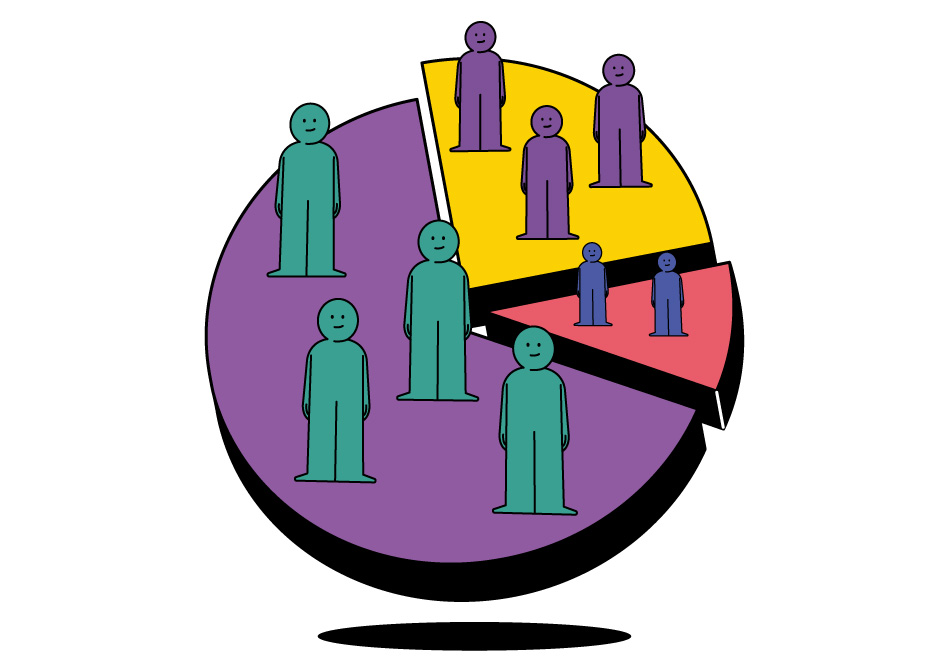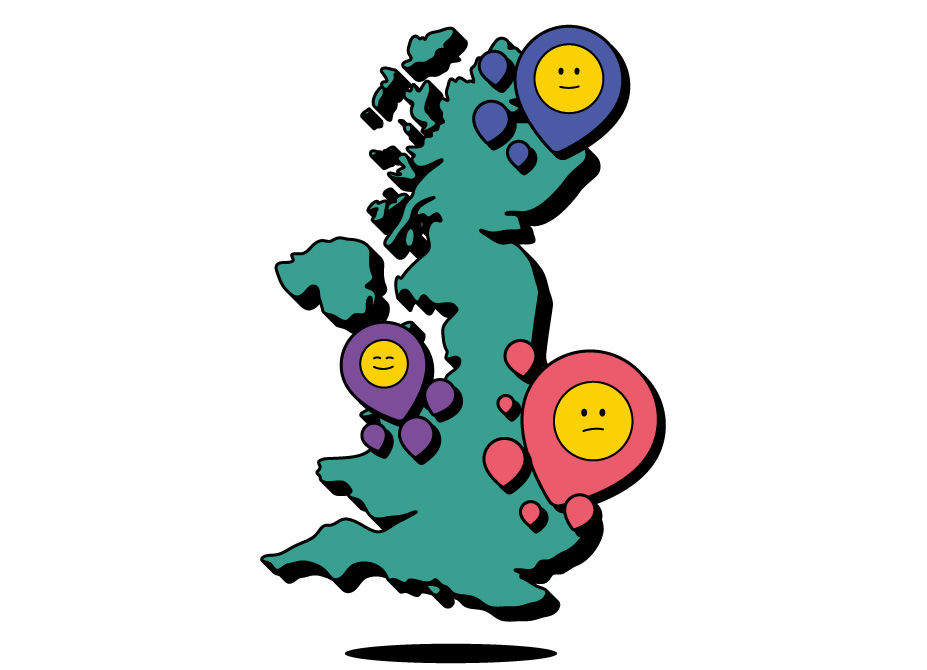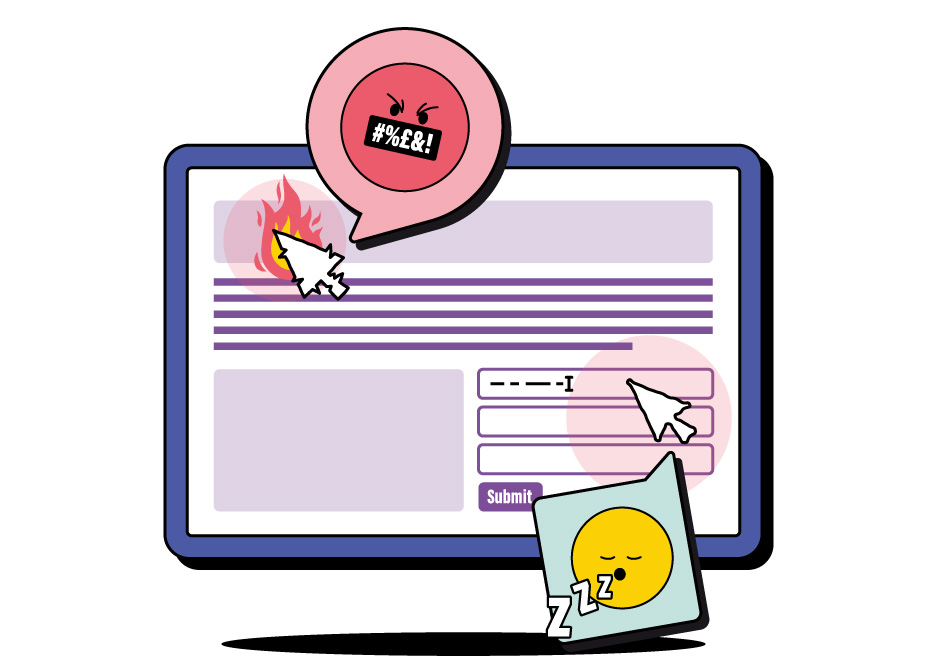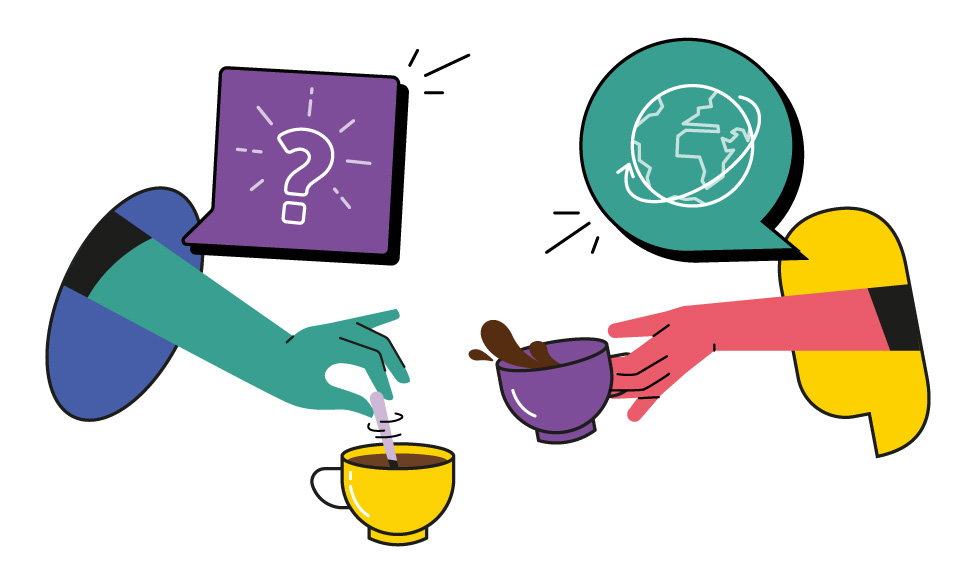
A brief guide to creative research methods
An introductory guide to creative research methods.
More +What is segmentation and why is it important? Well, this is the question Daisy is here to answer in this blog, showcasing the ways you can segment your audiences and how you can use it to bring a particular topic to life.
When working with large datasets containing a range of different information, it is near-impossible for the human eye to identify relationships between research responses and themes relating to demographics, locations, behaviours and characteristics. Segmentation is a statistical method that does this for us, working to identify trends and relationships across datasets. It seeks to break down your audiences into 'sub-groups' (or ‘segments’) so as to provide a richer understanding of the nuances that exist within your research population.
While this statistical analysis is key to identify these relationships and trends, human skill and attention to detail is equally essential to interpret the results, understand what the data is telling us and communicate these findings to others. Though segmentation is typically used in market research to better understand consumers and their behaviours, there is value in applying segmentation to social research too.
By identifying sub-groups within your audience, segmentation is invaluable in developing tailored interventions to target each sub-group. Behaviour change is not a ‘one size fits all’ approach - what works with one group won't necessarily work with another, and segmentation is your best chance at understanding this.
There are four ways you can segment your audiences: let’s dive in to each of these!

This means to segment based on information like age, gender and ethnicity.
Doing so can be useful to understand who your population is in terms of personal characteristics, and further consider the needs and wants of different sub-groups. For example, if you’re looking to provide physical activity services, an elderly population might be better served having low-intensity group activities, which would help reduce their risk of frailty and isolation. A younger demographic, however, may be more interested in individual activities, such as attending the gym or doing home workouts, which would help them reach their recommended levels of activity and increase fitness.
Personally, we would only recommend segmenting based on demographics when specifically wanting to explore how they link into people’s lived experiences. This could include exploring risk factors associated with health conditions (e.g., does age, gender or ethnicity impact risk), or access to public services (e.g., do those on a lower household income or living in areas of deprivation have equal access compared to those on a higher income or in more affluent areas). When thinking about people’s attitudes, behaviours and experiences, however, we would not advise segmenting people based on demographic information – just because people have similar demographic backgrounds does not mean they share similar beliefs and characteristics. For example, some elderly adults may want to do workout alone at a gym, and some young people may just want to do what they can and/or meet new people through group activities. Unless supported by further analysis, these factors can be completely discounted by focusing on demographics alone.

As you can probably guess by its name, this means to segment your audience based on the location in which they live and/or work, depending on what is most relevant to your research aims.
Understanding where your audiences are located can help you consider local challenges and facilitators that are relevant to them. For example, when looking to improve access to services, getting to them in-person is likely to be a bigger challenge for those in rural areas with poorer transport links than those in more urban areas with a range of options to choose from. This may present a case for improved transport infrastructure.
However, as with demographic segmentation, focusing on location alone may not provide sufficient insight into current challenges people face and potential solutions to combat these. Taking those identified as living in a rural area as an example, while poor transport links may appear to be limiting their ability to attend in-person services, some of them may be confident drivers with their own cars, or a mobile ‘pop-up’ service could be established that travels around rural areas to be easily available to residents. This provision would likely mitigate the location barrier preventing them from attending in-person services, and so continued low uptake of in-person services may be down to other barriers beyond location. Without appropriate understanding of these and therefore what people need and want from services, interventions developed to overcome what are thought to be the barriers may completely miss the mark.

Another type of segmentation that does what it says on the tin, behavioural segmentation means to segment audiences based on how they behave.
By understanding likely behaviours of your population and sub-groups, you can work to consider what influences them to behave in that way and what might encourage them to behave differently in future. It would be a particularly useful method for examining user behaviour, such as when using a digital product or accessing a service, to help identify challenges in their journey and create a smoother and more efficient process.
Take using a website as an example. You may have one segment that is likely to 'rage-click' (repeatedly clicking/tapping on something on a website or app, showing frustration) and disengage - further analysis can explore at what point in their journey this happens and consider how to update the website to reduce this. Another segment might be people who tend to browse the website without completing your 'call to action' (e.g., submitting an enquiry form) - seeing where they browse and spend their time would help to identify key touchpoints in their journey where messages or design could encourage them to submit the form.
However, segmenting based on behaviour only provides the ‘what’ (i.e., what people do), and not necessarily the ‘why’ (i.e., why they do it). Understanding what is influencing and sustaining behaviour is key to being able to consider what needs to change to support behaviour change. For example, when thinking about the group who are browsing a website but not ‘converting’ to the call to action, this could be for any number of reasons: lack of clarity on how they do so, the form being too complex, or them not seeing the benefit of doing so. Without this understanding, you won’t know which changes to implement to increase the number of people ‘converting’.

This segmentation approach is the Social Change favourite - it focuses on segmenting audiences based on shared characteristics, such as attitudes and experiences.
It helps formulate what people think and feel about a particular topic, what encourages and restricts behaviour and motivators and barriers to behaviour change. By understanding people's shared characteristics, you are better equipped to consider what interventions would help encourage positive behaviour change.
Take climate action as an example. One segment may care about their impact on the environment and want to take action, but not know how. Therefore, providing education on what they can do and the opportunities to do so could help encourage this group to take action. Another segment may know how they can take action, but aren't really bothered about their current impact and so aren't motivated to do so - inspirational and encouraging messages about how they can make a difference may therefore be more valuable in eliciting change in the form of action for this group.
We believe this is the best approach for behaviour change, because it provides rich insights into people's lives and enables you to build interventions that target relevant challenges and therefore work. However, while this approach highlights what intervention is required, it doesn’t necessarily outline the best approach for delivery. For example, if education is the intervention, online delivery may exclude those who don’t have the access, skills or confidence using digital platforms. Additionally, if it were done through in-person workshops, those living in rural areas with limited transportation may find it more difficult to attend than those in urban areas with a good transportation network. This again highlights the importance of further analysis following segmentation.
Once you’ve done your segmentation, don't stop there! Further quantitative and qualitative research and analysis can help you plug those important gaps in knowledge not necessarily addressed by the segmentation approach of your choice. It also helps you to get to know your segments a little bit better and take the first steps towards persona development.
For example, cross-tabbing analysis (i.e., comparing data to identify relationships) with any additional data from your segments can help you understand more about what they’re likely to look like, in addition to their likely attitudes, behaviours and experiences. If you segmented based on demographics, for example, you can cross-tab against behavioural data to understand how they’re likely to act. If segmenting by characteristics, you can use cross-tabbing to understand what their likely demographics are. To further complement this additional analysis, you could also conduct qualitative research. This would be to explore segments in more depth and elicit valuable insight into their lives that helps you to better understand the quantitative data you already have about them. Through this qualitative exploration, you can capture key quotes in their voice which help to tell their stories and capture the essence of their very segment.
By taking the time to conduct further research and analysis, you can create personas which enhance and build on segments, bring them to life and make them a reality. They become more personable and relatable, helping readers to visualise them better and what their lives are like. This enhanced understanding then puts you in the best position to consider what interventions and initiatives would work best for them and facilitate positive, sustainable behaviour change.

Not to make my inner data-geek too obvious (what did you expect from a Data Analyst?), but we love a segmentation exercise at Social Change HQ.
It’s an invaluable tool to help you not only gain a comprehensive understanding of your audiences, but also how best to support them and encourage positive change.
Interested? Get in touch with our team via hello@social-change.co.uk to find out more about how segmentation can add value to your important project.

An introductory guide to creative research methods.
More +
An introductory guide to qualitative research analysis.
More +
In this guide, we have demonstrated 10 ways in which research can be done remotely through different quantitative, qualitative and ethnographic methods. All are methods already being utilised, but with a slight twist.
More +
Enter your email address below to access the Academy and our Webinars